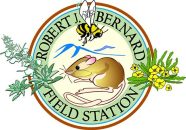Fairchild, Cassie (2005)
Impact of Variation in Arthropod Prey Abundance on Habitat Use in the Western Fence Lizard Sceloporus occidentalis.
Bachelor of Science, Harvey Mudd College, Biology.
Advisor: Stephen Adolph.
For the western fence lizard (Sceloporus occidentalis), the selection of perch locations is an important aspect of habitat utilization. I examined the impacts of variation in the abundance of arthropod prey on lizards’ perch heights, hypothesizing that lizards tend to perch disproportionately frequently where prey are most abundant. I collected arthropod samples and observed perched lizards in the Robert J. Bernard Biological Field Station in Claremont, CA, between September 2004 and April 2005. From this work, I found that arthropod densities, biomasses, and diversities all vary significantly with time and with microhabitat. Arthropods are most abundant on the ground and in the lower sections of trees. However, I also found that lizards prefer to perch in the middle sections of trees, avoiding perch sites on the ground and high in trees. These results indicate that western fence lizards do not concentrate in the microhabitats with the most prey, but that does not rule out an effect of prey availability on habitat use. I determined that fence lizards are more likely to attack prey items that are close to their perching sites than prey items that are far away, which further implies a role of prey availability in habitat use.
